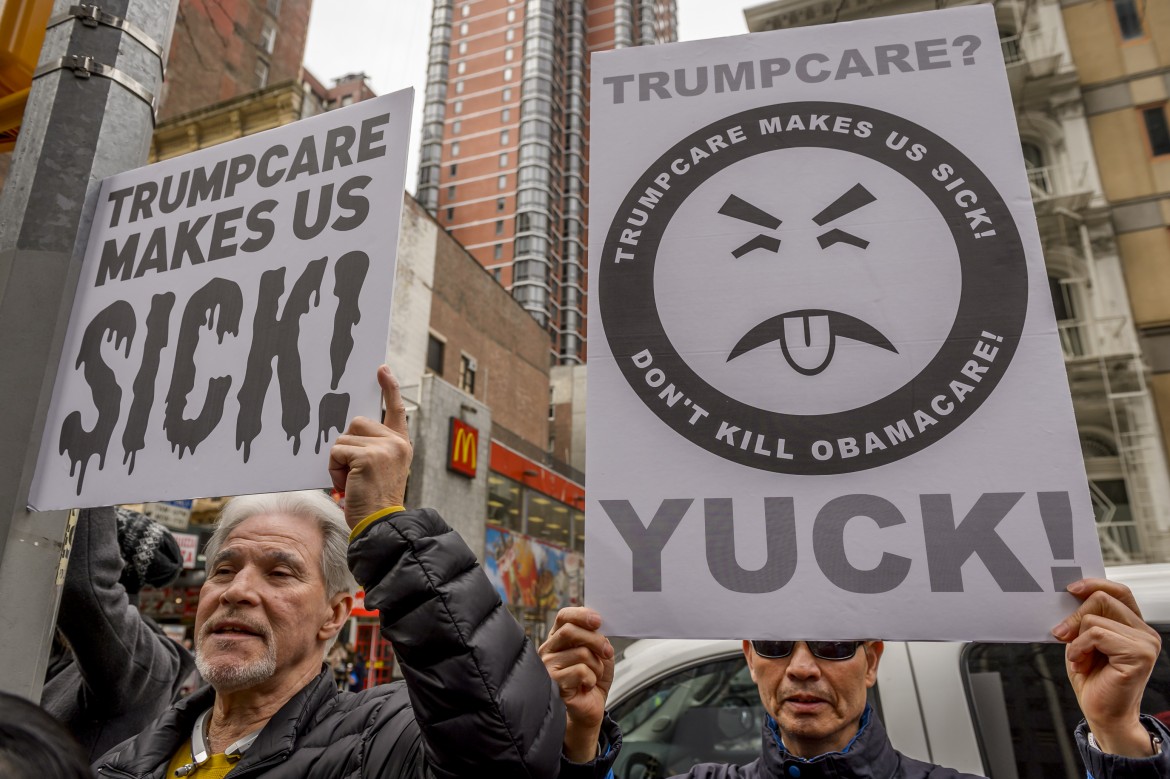Commentary
Operation ‘Robin Hood in Reverse’
Not coincidentally, the sum of the welfare cuts would be around $1.1 trillion, or precisely the cost of the tax reductions for the benefit of millionaires and multinational corporations Republicans passed in December.

The class war is on, and there will be no shortage of victims. The budget presented Monday by the Trump administration makes no secret of its goals: to take away from the poor and give to the rich. Yet, if in previous times this policy was at least somewhat covered up or disguised under the rhetoric of
“growth” or “merit,” now the coterie of billionaires who have the White House in their iron grip are making no secret of their goals, and nothing that can be pilfered is safe.
It all begins with the so-called “food stamps,” the government vouchers that allow 40 million Americans to put food on the table every day. According to the budget proposal, these would be cut by $200 billion over 10 years. As Marie Antoinette said, if the poor have no bread, let them eat cake.
But it is not enough, according to Trump’s minions, to send the unemployed, the large families and those who live in the ghettos to bed without dinner, as that does not lead to substantial enough savings. They have set their sights on two even juicier targets: for one, medical assistance for the poor (Medicaid), which they want to cut by $266 billion, essentially decreeing that most of its beneficiaries today will be left without any healthcare at all. And an even more appetizing target, which Republicans have been drooling over for more than seven years, is the program of private, government-subsidized medical care known as Obamacare. There’s a lot here to satisfy their appetite, as this is a program for the middle class which involves tens of millions of Americans, and eliminating it would leave an extra $700 billion in the federal coffers.
Not coincidentally, the sum of the cuts to these three budget items would be around $1.1 trillion, or precisely the cost of the tax reductions for the benefit of millionaires and multinational corporations that Republicans passed in December. Operation “Robin Hood in Reverse” would thus be a resounding success.
There are many other interesting items to be found in this budget, such as an explosion in military spending, which would increase by 777 billion dollars over ten years thanks to a series of new weapons programs, including next-generation nuclear warheads, miniaturized and therefore “easier to use” (this fifties-era notion keeps resurfacing every once in a while, conveniently forgetting the fact that the local use of nuclear weapons has always been considered to be the first step towards a total nuclear war). This “militarization” of the budget would be balanced out by drastic cuts in funding for diplomacy (-27 percent), environmental protection (33 percent), scientific research (-30 percent), and even for the Army Corps of Engineers, who are in charge of civil works (-22 percent).
One of the key election promises by Trump was a large infrastructure program (rumored to be in the vicinity of one billion dollars), which was supposed to improve the poor condition of bridges, roads, dams and ports. There is little set aside for this in the 2018 budget—or even, arguably, nothing at all: although the budget plans to allocate $199 billion for this purpose, it also eliminates $178 billion that would have normally been available for transport infrastructure, so it is unclear whether infrastructure spending is set to increase, or remain, at best, at around the same level as before.
And what about the deficit? For decades now, whenever the Republicans have been in opposition, they have been promising to balance the budget (a promise also made by candidate Trump in 2016). But when they find themselves in power, all of a sudden the deficit is skyrocketing because of the tax cuts and increased military spending—which, however, provides them with a great excuse to demand cuts to social spending, in the name of curbing the excessive deficit. If the budget deficit inherited from the Obama administration was at 3.5 percent of the GDP, in just two years Trump plans to bring it up to 4.7 percent (i.e. increase it by almost a third).
In fact, the actual deficit will likely be much higher, because, while there is broad consensus in Congress on increasing military spending, there is even more robust resistance to cutting social programs. Last year, the attempt to eliminate Obamacare failed thanks to three Republican senators, and today the party has a majority of just 51 seats out of 100, which is by no means a unified one, at least regarding popular public assistance programs such as Medicaid.
Finally, it must be said that this budget proposal perfectly illustrates the philosophy of the Trump administration, but it is unlikely to be passed by Congress in this form. Those holding the purse strings are, in the end, the House (where the present Republican majority could disappear after the elections on Nov. 6), and the Senate (where, as we just mentioned, the Republicans certainly don’t have the votes to sink their teeth into programs such as those for food stamps or subsidized drugs for seniors).
Whatever happens during the debates and votes in Congress in the coming weeks, the intentions of Trump and his team (made up of bankers and generals, lest we forget) are crystal clear: the class war will be a long one, and blood and tears will flow.
Originally published at https://ilmanifesto.it/trump-2018-lamerica-a-letto-senza-cena-e-senza-cure/ on 2018-02-14
